EPS-Ledger: Blockchain Hyperledger Sawtooth-Enabled Distributed Power Systems Chain of Operation and Control Node Privacy and Security
Abstract
:1. Introduction
- We introduce the combination of blockchain and cyber-physical technology in the energy system, which provides transactions of power node security, data immutability, integrity, transparency, and a distributed control access and distributed monitoring. It resists the unauthorized access of system operation and control, connects stakeholders in a permissioned private network, and exchanges and transfers energy-related information in a secure transmission channel.
- In addition, we propose a novel and secure blockchain Hyperledger Sawtooth-aware serverless distributed network architecture for renewable energy and power systems chain of operations and control management to replace the current centralized system that impacts an improved performance, transparency, security, and complete provenance.
- We explain the importance of the P2P network of microgrids in renewable energy and analyze the developed blockchain-enabled security and create smart contracts (such as register(), AddNode(), and UpdateTransaction()) for secure communication and distributed monitoring.
- Finally, the consensus policy and event transitions and execution are discussed, and we highlight critical implementation challenges and limitations in the proposed EPS-ledger, along with the open research areas and future developments.
2. Literature Review
3. The Existing Power Systems Control Operations and Monitoring with Blockchain-Cyber-Physical System
3.1. Energy Systems and Blockchain Hyperledger Sawtooth-Enabled Cyber-Physical Systems
3.2. Business Rules
3.2.1. Peer-to-Peer (P2P) Connectivity
3.2.2. Permissioning Requirements (Validated Authority)
- Batch;
- Transaction and transaction processor;
- Consensus;
- Validator;
- Node;
- Client;
- Authorization procedure;
- State subscriber;
- Policy.
- Data privacy, integrity, and confidentiality;
- Efficient processing;
- Sawtooth business rules functionality;
- Secure request submission, validation, and node transaction.
- Renewable energy project developers;
- Electric utility management;
- Environment and Nature Land Authority;
- Economic and Social Development Authority;
- Other interest groups;
- Residents and business owners;
- Non-government organizations.
4. Proposed Blockchain Hyperledger Sawtooth-Enabled Architecture for Distribution Power Systems
4.1. Implementation of Business Rules
- Registration contract (register() contract);
- Operation and control accumulator contract (addNode() contract);
- Transaction update contract (updateTransaction() contract).
| Algorithm 1: Registration of Participating Stakeholders (register()), (registration of the participating stakeholders and validate their roles). |
| Input: EPS-Ledger-Sawtooth Engineer Initiate System tx.main(), renewable_energy_participanets (participationStakeholders), stakeholder title (stakeholderTitle), primary stakeholders, secondary stakeholders primaryStakeholders, name secondaryStakeholders, name name, current timestamp(execute), renewable energy system accumulator contract address (acAddress), stakeholder register stakeholderRegister, counter(stakeholderCounter) stakeholderRegister is responsible to authorization or set of authorization to maintain register addresses in the contract; if tx.main() is true, then if participationStakeholders is not in the contract then changes state of the contract and add new details record participationStakeholders, stakeholderTitle, primaryStakeholders, secondaryStakeholders, name execute, and acAddress; counter calculates the StakeholderCounter and store; else backtracking and state error generation end; else backtracking and state error generation end; |
| Algorithm 2: addNode() Contract, The distributed power systems chain of operation and control accumulator contract (addNode()). |
| Input: EPS-Transaction-Sawtooth Engineer Initiate System Addresses tx.main(), accumulator ID (accID), accumulator node transaction access (accNodeTransaction), current operation and control timestamp(execute), transaction of energy power operational record update contract (add Transaction Update Contract (TUC)) EPS-Ledger Sawtooth Engineer (SE), EPS accumulator count (acCount) SE is a set of all authorized addresses of the energy Sawtooth Engineer if tx.main() is SE then if accumulator node has not existed then change state of acCount, add new node transaction record; accID, accNodeTransaction, current operational and control, tx.main(), add on TUC to the blockchain distributed ledger; acCount is increment by a unit; else backtracking and state error generation end; else backtracking and state error generation end; |
| Algorithm 3: updateTransaction() Contract, EPS-ledger transaction update contract (updateTransaction()). |
| Input: EPS-Ledger-Sawtooth Engineer (SE) Initiate System Addresses tx.main(), SE assign address (assign), current timestamp(execute), current transaction (curTransaction), previous transaction (preTransaction), Sawtooth EPS-Ledger Engineers SE, calculate transactions (calTransaction) SE individual authorize or set of authorize contract and responsible to manages the transactional updates contract if tx.main() is SE then if check preTransaction has true in the blockchain distributed ledger, then state of accNodeTransaction (addNode() Contract) is updated to assign and add new address also, TUC updated add new records accordingly: assign, curTransaction, preTransaction, and calTransaction else backtracking and state error generation end; else backtracking and state error generation end; |
4.2. Simulations and Results Discussion
5. The Proposed Hyperledger Sawtooth-Enabled Modular Operations Presented through Sequence Diagram
5.1. Working Operations of the Proposed EPS-Ledger
5.2. EPS-Ledger Implementation Challenges and Limitations
5.2.1. Regulatory Compliance
5.2.2. Platform Interoperability
5.2.3. Security Cost and Data Privacy
5.2.4. Data Standardization and Scope
6. Conclusions
Author Contributions
Funding
Conflicts of Interest
References
- Poudyal, R.; Loskot, P.; Nepal, R.; Parajuli, R.; Khadka, S.K. Mitigating the current energy crisis in Nepal with renewable energy sources. Renew. Sustain. Energy Rev. 2019, 116, 109388. [Google Scholar] [CrossRef]
- Newell, R.G.; Raimi, D. Global Energy Outlook Comparison Methods: 2020 Update; Resources for the Future: Washington, DC, USA, 2020. [Google Scholar]
- Vedik, B.; Kumar, R.; Deshmukh, R.; Verma, S.; Shiva, C.K. Renewable Energy-Based Load Frequency Stabilization of Interconnected Power Systems Using Quasi-Oppositional Dragonfly Algorithm. J. Control. Electr. Syst. 2021, 32, 227–243. [Google Scholar] [CrossRef]
- Weschenfelder, F.; Leite, G.D.N.P.; da Costa, A.C.A.; de Castro Vilela, O.; Ribeiro, C.M.; Ochoa, A.A.V.; Araujo, A.M. A review on the complementarity between grid-connected solar and wind power systems. J. Clean. Prod. 2020, 257, 120617. [Google Scholar] [CrossRef]
- Foley, A.M.; McIlwaine, N.; Morrow, D.J.; Hayes, B.P.; Zehir, M.A.; Mehigan, L.; Papari, B.; Edrington, C.S.; Baran, M. A critical evaluation of grid stability and codes, energy storage and smart loads in power systems with wind generation. Energy 2020, 205, 117671. [Google Scholar]
- Balakheli, M.M.; Chahartaghi, M.; Sheykhi, M.; Hashemian, S.M.; Rafiee, N. Analysis of different arrangements of combined cooling, heating and power systems with internal combustion engine from energy, economic and environmental viewpoints. Energy Convers. Manag. 2020, 203, 112253. [Google Scholar] [CrossRef]
- Ullah, S.; Haidar, A.M.; Hoole, P.; Zen, H.; Ahfock, T. The current state of Distributed Renewable Generation, challenges of interconnection and opportunities for energy conversion-based DC microgrids. J. Clean. Prod. 2020, 273, 122777. [Google Scholar] [CrossRef]
- Khan, A.A.; Shaikh, A.A.; Cheikhrouhou, O.; Laghari, A.A.; Rashid, M.; Shafiq, M.; Hamam, H. IMG-forensics: Multimedia-enabled information hiding investigation using convolutional neural network. IET Image Process 2021, 1–9. [Google Scholar] [CrossRef]
- Peyghami, S.; Palensky, P.; Blaabjerg, F. An overview on the reliability of modern power electronic based power systems. IEEE Open J. Power Electron. 2020, 1, 34–50. [Google Scholar] [CrossRef] [Green Version]
- Kenyon, R.W.; Bossart, M.; Marković, M.; Doubleday, K.; Matsuda-Dunn, R.; Mitova, S.; Julien, S.A.; Hale, E.T.; Hodge, B.M. Stability and control of power systems with high penetrations of inverter-based resources: An accessible review of current knowledge and open questions. Sol. Energy 2020, 210, 149–168. [Google Scholar] [CrossRef]
- Kouhizadeh, M.; Saberi, S.; Sarkis, J. Blockchain technology and the sustainable supply chain: Theoretically exploring adoption barriers. Int. J. Prod. Econ. 2021, 231, 107831. [Google Scholar] [CrossRef]
- Bouachir, O.; Aloqaily, M.; Tseng, L.; Boukerche, A. Blockchain and fog computing for cyberphysical systems: The case of smart industry. Computer 2020, 53, 36–45. [Google Scholar] [CrossRef]
- Tsao, Y.C.; Thanh, V.V. Toward blockchain-based renewable energy microgrid design considering default risk and demand uncertainty. Renew. Energy 2021, 163, 870–881. [Google Scholar]
- Afzal, M.; Huang, Q.; Amin, W.; Umer, K.; Raza, A.; Naeem, M. Blockchain enabled distributed demand side management in community energy system with smart homes. IEEE Access 2020, 8, 37428–37439. [Google Scholar] [CrossRef]
- Wu, J.; Tran, N.K. Application of blockchain technology in sustainable energy systems: An overview. Sustainability 2018, 10, 3067. [Google Scholar] [CrossRef] [Green Version]
- Bao, J.; He, D.; Luo, M.; Choo, K.K.R. A survey of blockchain applications in the energy sector. IEEE Syst. J. 2020, 15, 3370–3381. [Google Scholar] [CrossRef]
- Hou, J.; Wang, C.; Luo, S. How to improve the competiveness of distributed energy resources in China with blockchain technology. Technol. Forecast. Soc. Chang. 2020, 151, 119744. [Google Scholar] [CrossRef]
- Wolsink, M. Distributed energy systems as common goods: Socio-political acceptance of renewables in intelligent microgrids. Renew. Sustain. Energy Rev. 2020, 127, 109841. [Google Scholar] [CrossRef]
- Kumar, N.M.; Chand, A.A.; Malvoni, M.; Prasad, K.A.; Mamun, K.A.; Islam, F.R.; Chopra, S.S. Distributed energy resources; the application of AI, IoT, and blockchain in smart grids. Energies 2020, 13, 5739. [Google Scholar] [CrossRef]
- Baggio, A.; Grimaccia, F. Blockchain as Key Enabling Technology for Future Electric Energy Exchange: A Vision. IEEE Access 2020, 8, 205250–205271. [Google Scholar] [CrossRef]
- Iskakova, A.; Nunna, H.K.; Siano, P. Ethereum Blockchain-Based Peer-To-Peer Energy Trading Platform. In Proceedings of the 2020 IEEE International Conference on Power and Energy (PECon), Penang, Malaysia, 7–8 December 2020; IEEE: Piscataway, NJ, USA, 2020; pp. 327–331. [Google Scholar]
- Lu, J.; Wu, S.; Cheng, H.; Xiang, Z. Smart contract for distributed energy trading in virtual power plants based on blockchain. Comput. Intell. 2020, 107, 2411–2502. [Google Scholar]
- Petri, I.; Barati, M.; Rezgui, Y.; Rana, O.F. Blockchain for energy sharing; trading in distributed prosumer communities. Comput. Ind. 2020, 123, 103282. [Google Scholar] [CrossRef]
- Mnatsakanyan, A.; Albeshr, H.; Al Marzooqi, A.; Bilbao, E. Blockchain-Integrated Virtual Power Plant Demonstration. In Proceedings of the 2020 2nd International Conference on Smart Power & Internet Energy Systems (SPIES), Bangkok, Thailand, 15–18 September 2020; IEEE: Piscataway, NJ, USA, 2020; pp. 172–175. [Google Scholar]
- Di Silvestre, M.L.; Gallo, P.; Guerrero, J.M.; Musca, R.; Sanseverino, E.R.; Sciumè, G.; Vásquez, J.C.; Zizzo, G. Blockchain for power systems: Current trends; future applications. Renew. Sustain. Energy Rev. 2020, 119, 109585. [Google Scholar] [CrossRef]
- Ibrahim, M.S.; Dong, W.; Yang, Q. Machine learning driven smart electric power systems: Current trends and new perspectives. Appl. Energy 2020, 272, 115237. [Google Scholar] [CrossRef]
- Duarte, Y.S.; Szpytko, J.; del Castillo Serpa, A.M. Monte Carlo simulation model to coordinate the preventive maintenance scheduling of generating units in isolated distributed Power Systems. Electr. Power Syst. Res. 2020, 182, 106237. [Google Scholar] [CrossRef]
- Rathore, H.; Mohamed, A.; Guizani, M. A survey of blockchain enabled cyber-physical systems. Sensors 2020, 20, 282. [Google Scholar] [CrossRef] [Green Version]
- Ali, F.S.; Aloqaily, M.; Alfandi, O.; Ozkasap, O. Cyberphysical blockchain-enabled peer-to-peer energy trading. Computer 2020, 53, 56–65. [Google Scholar] [CrossRef]
- Vatankhah Barenji, A.; Li, Z.; Wang, W.M.; Huang, G.Q.; Guerra-Zubiaga, D.A. Blockchain-based ubiquitous manufacturing: A secure and reliable cyber-physical system. Int. J. Prod. Res. 2020, 58, 2200–2221. [Google Scholar] [CrossRef]
- Graf, M.; Küsters, R.; Rausch, D. Accountability in a Permissioned Blockchain: Formal Analysis of Hyperledger Fabric. In Proceedings of the 2020 IEEE European Symposium on Security and Privacy (EuroS&P), Genova, Italy, 7–11 September 2020; IEEE: Piscataway, NJ, USA, 2020; pp. 236–255. [Google Scholar]
- Moriggl, P.; Asprion, P.M.; Schneider, B. Blockchain Technologies Towards Data Privacy—Hyperledger Sawtooth as Unit of Analysis. In New Trends in Business Information Systems and Technology; Springer: Berlin, Germany, 2020; pp. 299–313. [Google Scholar]
- Vivek, S.K.; Yashank, R.S.; Prashanth, Y.; Yashas, N.; Namratha, M. E-Voting System using Hyperledger Sawtooth. In Proceedings of the 2020 International Conference on Advances in Computing, Communication & Materials (ICACCM), Dehradun, India, 21–22 August 2020; IEEE: Piscataway, NJ, USA, 2020; pp. 29–35. [Google Scholar]
- Uddin, M. Blockchain Medledger: Hyperledger fabric enabled drug traceability system for counterfeit drugs in pharmaceutical industry. Int. J. Pharm. 2021, 597, 120235. [Google Scholar] [CrossRef]
- Moschou, K.; Theodouli, A.; Terzi, S.; Votis, K.; Tzovaras, D.; Karamitros, D.; Diamantopoulos, S. Performance Evaluation of different Hyperledger Sawtooth transaction processors for Blockchain log storage with varying workloads. In Proceedings of the 2020 IEEE International Conference on Blockchain (Blockchain), Rhodes, Greece, 2–6 November 2020; IEEE: Piscataway, NJ, USA, 2020; pp. 476–481. [Google Scholar]
- Perboli, G.; Capocasale, V.; Gotta, D. Blockchain-based transaction management in Smart Logistics: A Sawtooth framework. In Proceedings of the 2020 IEEE 44th Annual Computers Software and Applications Conference (COMPSAC), Madrid, Spain, 13–17 July 2020; IEEE: Piscataway, NJ, USA, 2020; pp. 1713–1718. [Google Scholar]
- Wang, R.; Ye, K.; Meng, T.; Xu, C.Z. Performance Evaluation on Blockchain Systems: A Case Study on Ethereum, Fabric, Sawtooth and Fisco-Bcos. In Proceedings of the International Conference on Services Computing, Honolulu, HI, USA, 22–26 June 2020; Springer: Berlin, Germany, 2020; pp. 120–134. [Google Scholar]
- Zhao, Y.; Peng, K.; Xu, B.; Liu, Y.; Xiong, W.; Han, Y. Applied engineering programs of energy blockchain in US. Energy Procedia 2019, 158, 2787–2793. [Google Scholar] [CrossRef]
- Namasudra, S.; Deka, G.C.; Johri, P.; Hosseinpour, M.; Gandomi, A.H. The revolution of blockchain: State-of-the-art and research challenges. Arch. Comput. Methods Eng. 2021, 28, 1497–1515. [Google Scholar] [CrossRef]
- Shafiq, M.; Tian, Z.; Bashir, A.K.; Jolfaei, A.; Yu, X. Data mining and machine learning methods for sustainable smart cities traffic classification: A survey. Sustain. Cities Soc. 2020, 60, 102177. [Google Scholar] [CrossRef]
- Uriarte, R.B.; Zhou, H.; Kritikos, K.; Shi, Z.; Zhao, Z.; De Nicola, R. Distributed service-level agreement management with smart contracts and blockchain. Concurr. Comput. Pract. Exp. 2020, 33, e5800. [Google Scholar] [CrossRef]
- Shafiq, M.; Tian, Z.; Bashir, A.K.; Du, X.; Guizani, M. Corrauc: A malicious bot-iot traffic detection method in iot network using machine learning techniques. IEEE Internet Things J. 2020, 99, 3242–3254. [Google Scholar] [CrossRef]
- Khan, A.A.; Uddin, M.; Shaikh, A.; Laghari, A.A.; Rajput, A. MF-Ledger: Blockchain Hyperledger Sawtooth-enabled Novel and Secure Multimedia Chain of Custody Forensic Investigation Architecture. IEEE Access 2021, 9, 103637–103650. [Google Scholar] [CrossRef]
- Shafiq, M.; Tian, Z.; Sun, Y.; Du, X.; Guizani, M. Selection of effective machine learning algorithm and Bot-IoT attacks traffic identification for internet of things in smart city. Future Gener. Comput. Syst. 2020, 107, 433–442. [Google Scholar] [CrossRef]
- Khan, A.A.; Laghari, A.A.; Awan, S.; Jumani, A.K. Fourth Industrial Revolution Application: Network Forensics Cloud Security Issues. In Security Issues and Privacy Concerns in Industry 4.0 Applications; WILEY: Hoboken, NJ, USA, 2021; pp. 15–33. [Google Scholar]

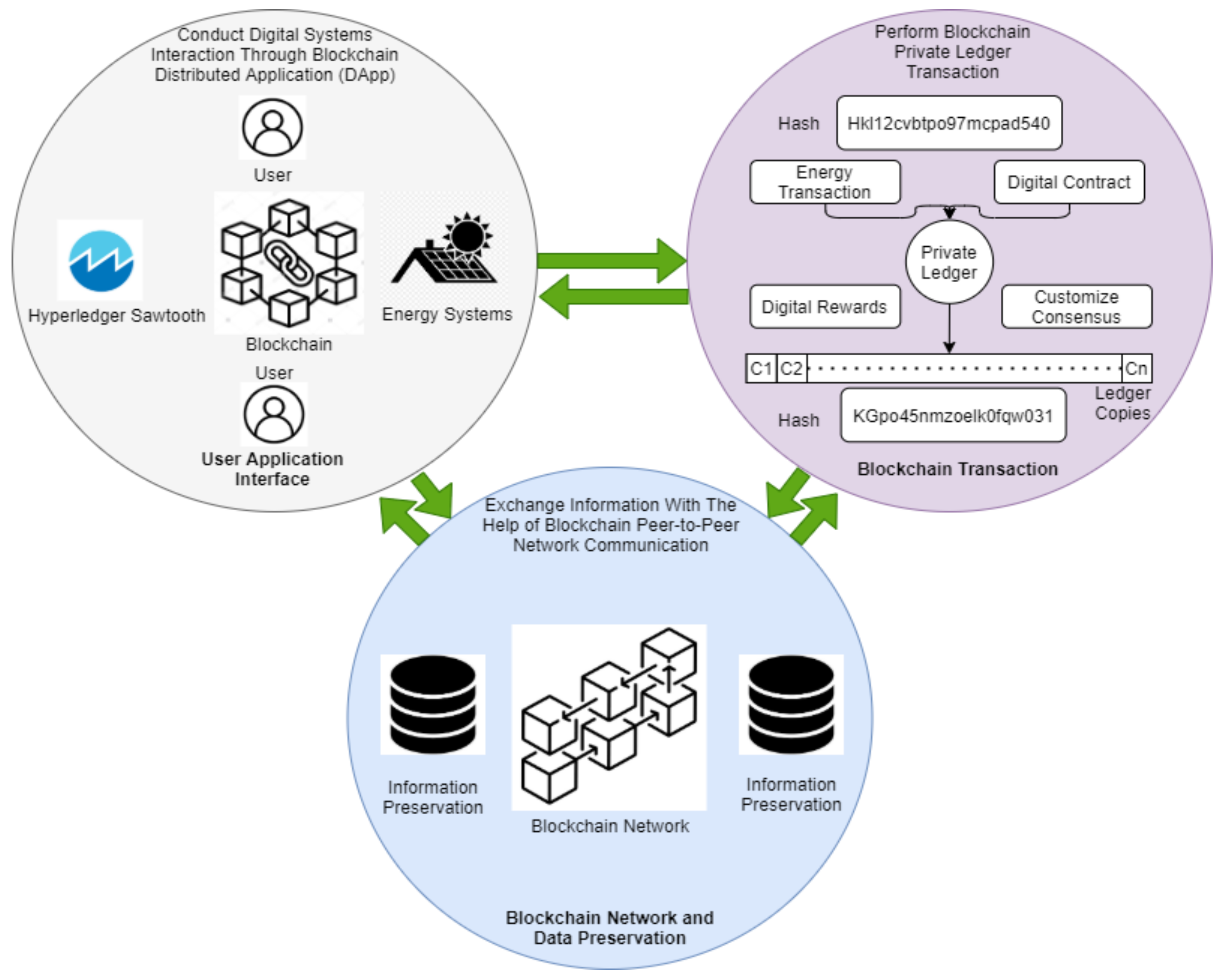

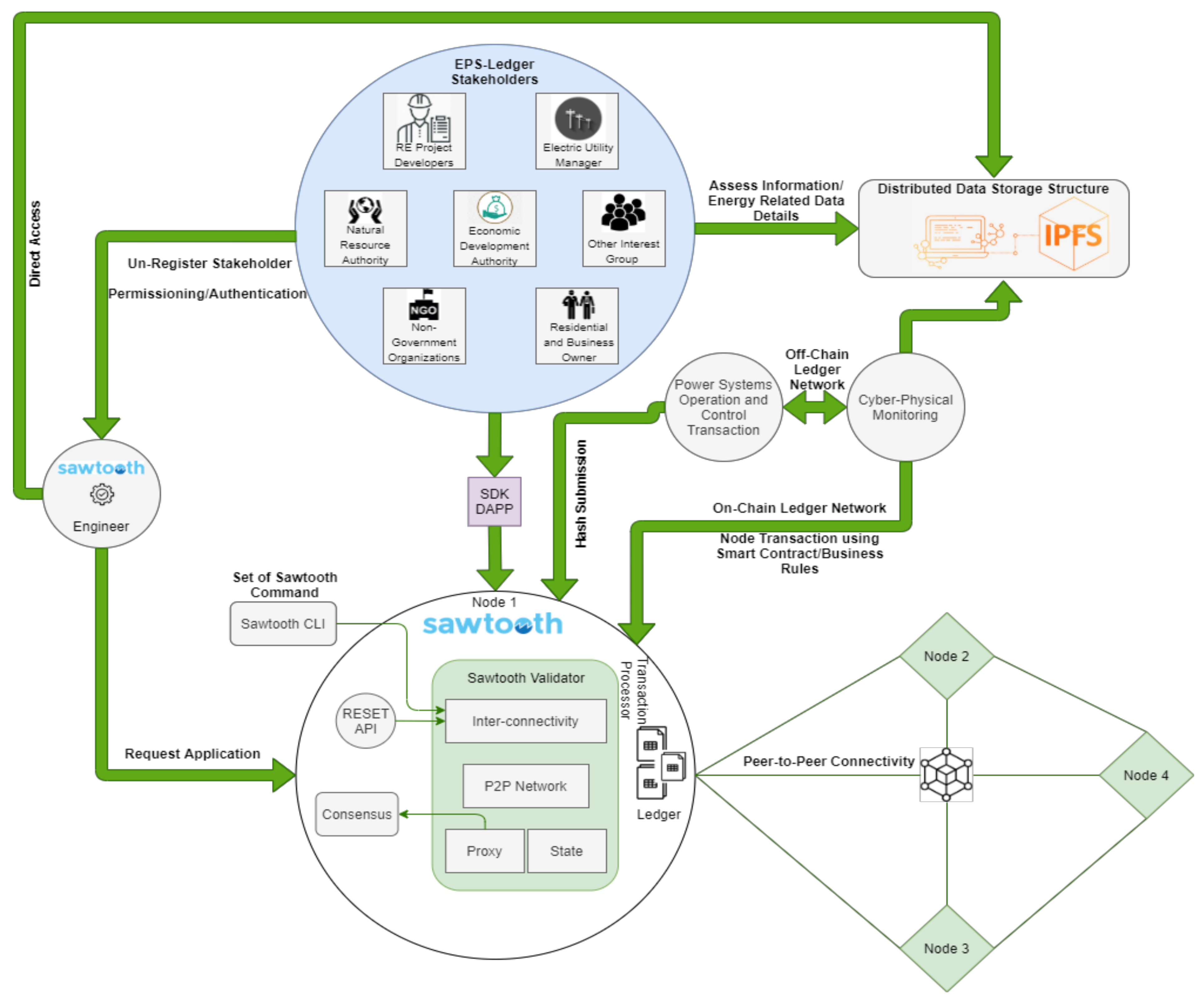
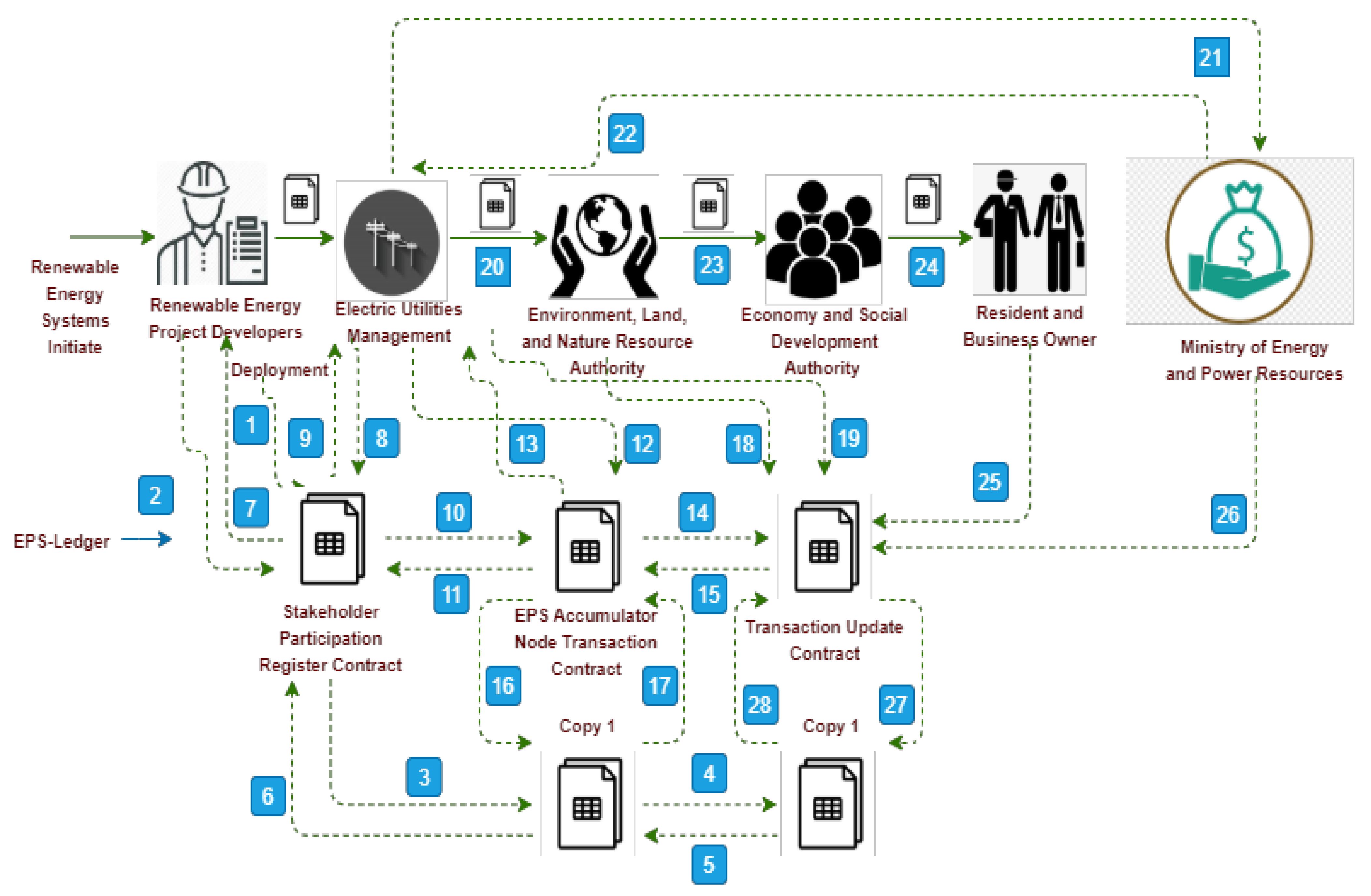



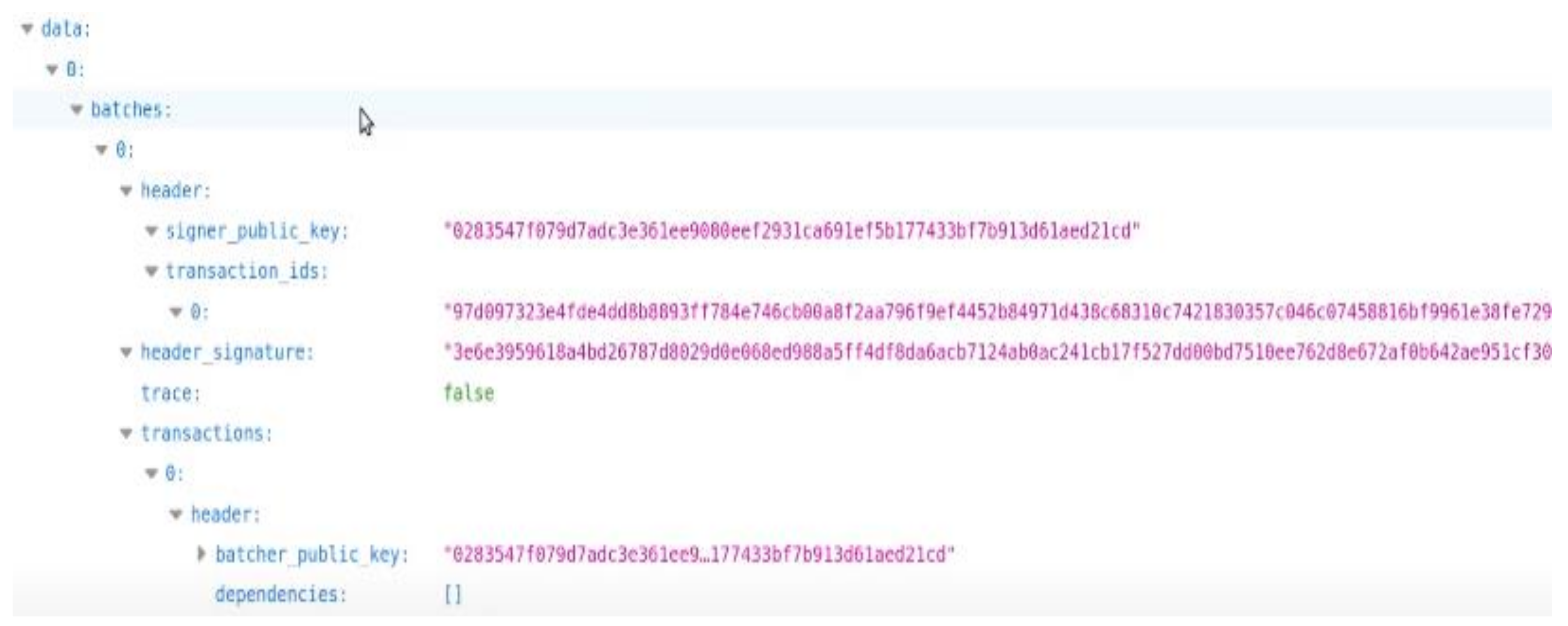


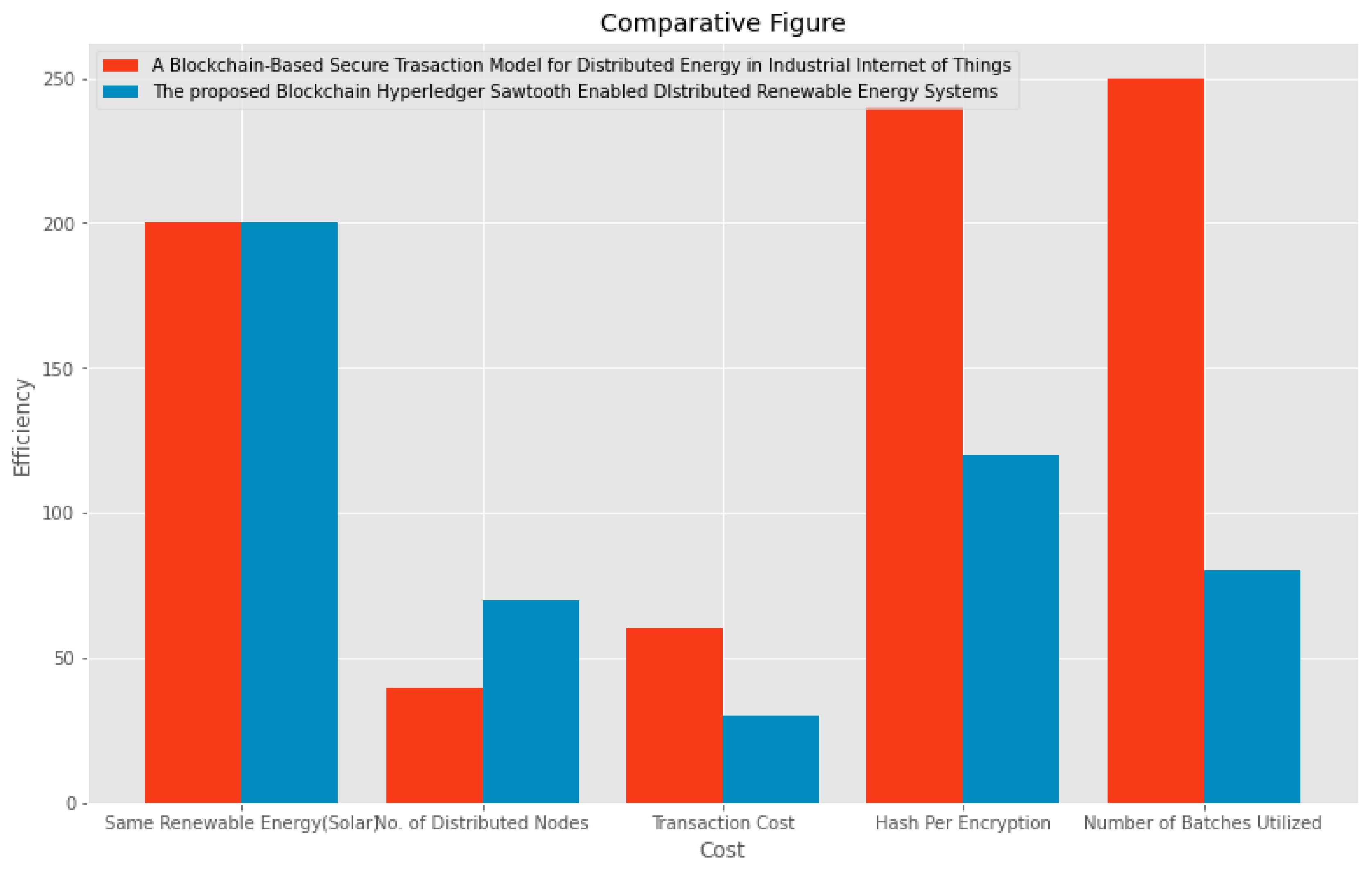
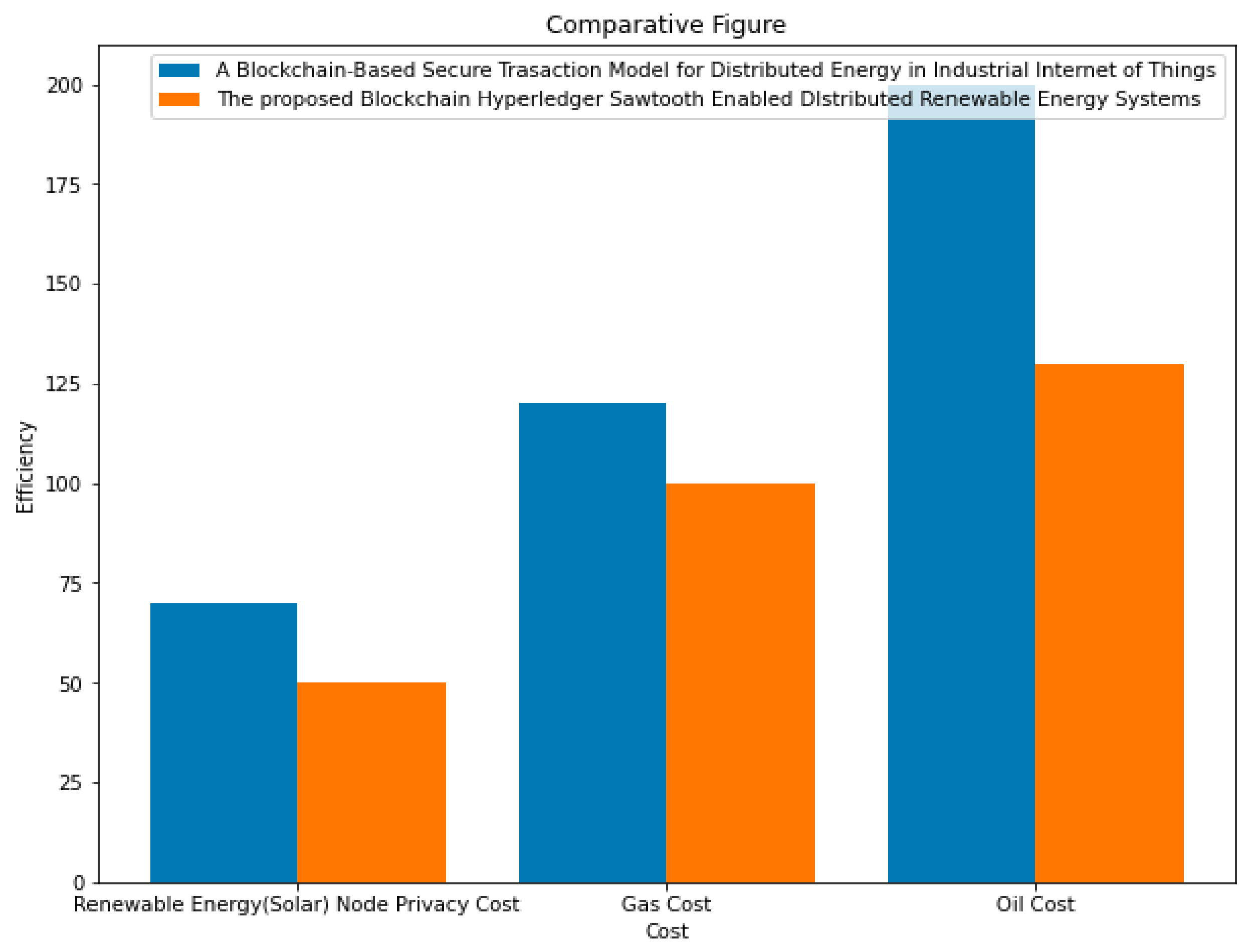

| Paper Title | Proposed Methodology | Challenges/Limitations | References |
|---|---|---|---|
| How to improve the competitiveness of distributed energy resources in China with blockchain technology | J. Hou et al. presented the current status of distributed energy resources in China first, and then used Michael Porter’s force strategy to analyze the competitiveness of distributed energy resources. |
| [17] |
| Distributed energy systems as common goods: Socio-political acceptance of renewables in intelligent microgrids | Maarten Wolsink investigated the distributed energy resources and their impact on social political acceptance, and further managed private commodity delivery in the public grid and monitoring through the P2P application. |
| [18] |
| Distributed Energy Resources and the Application of AI, IoT, and Blockchain in Smart Grids | N. M Kumar et al. explained the modern power infrastructure based on the smart grid, the two-way flow of electricity and data between peers within the distributed electric energy power system using blockchain, IoT, and artificial intelligence (fuzzy logic). |
| [19] |
| Blockchain as Key Enabling Technology for Future Electric Energy Exchange: A Vision | A. Baggio et al. proposed a blockchain enabling technology for designing and supporting grid infrastructure, a framework that addresses a decentralized energy grid platform hosted through direct participation of the coordination procedures. |
| [20] |
| Ethereum Blockchain-Based Peer-To-Peer Energy Trading Platform | A. Iskakova et al. focused on the blockchain ethereum-enabled application for the energy industry, addressing the potential challenges and limitations of distributed energy resources and reliable transactive energy management (P2P). |
| [21] |
| Smart contract for distributed energy trading in virtual power plants based on blockchain | J. Lu et al. proposed a blockchain-enabled distributed architecture for virtual power plants and energy internet for real-time electricity prices and monitoring. In addition, the analysis of the supply and demand information was conducted in real time, so that bidirectional selection could be carried out, and this distributed energy was connected to the grid. |
| [22] |
| Blockchain for energy sharing and trading in distributed prosumer communities | I. Petri et al. demonstrated how blockchains can be utilized and support the formation of energy systems. Design and implement a blockchain-enabled framework and smart contract that manages energy node transactions and energy-related information exchanges in a community of prosumers; moreover, to provide a more secure energy trading environment between producers and consumers. |
| [23] |
| Blockchain-Integrated Virtual Power Plant Demonstration | A. Mnatsakanyan et al. proposed a blockchain-enabled mechanism that handles energy transactions with a virtual power plant on a distributed ledger along with complete data transparency. Moreover, they developed the management of grid digitalized and enabled new distributed applications in power systems. |
| [24] |
| Energy Type | No. of Nodes | Encrypted Hash | Transaction Cost | Batch |
|---|---|---|---|---|
| Renewable (Wind, Water, Solar, etc.) | Node 1 | 000000a87cb5eafdcca6a8cde0fb0dcc1400c5ab27447a6aa82c1c0cbf0fbcaf64c0b | 1 | 0 |
| Node 2 | 000000a87cb5eafdcca6a8cde0fb0dcc1400c5ab27447a6aa82c128440f169a04216b7 | 3 | 0 | |
| Node 3 | 000000a87cb5eafdcca6a8cde0fb0dcc1400c5ab27447a6aa82c1918142591ba4e8a7 | 8 | 1 | |
| Node 4 | 000000a87cb5eafdcca6a8cde0fb0dcc1400c5ab27447a6aa82c12840f169a04216b7 | 13 | 1 |
Publisher’s Note: MDPI stays neutral with regard to jurisdictional claims in published maps and institutional affiliations. |
© 2021 by the authors. Licensee MDPI, Basel, Switzerland. This article is an open access article distributed under the terms and conditions of the Creative Commons Attribution (CC BY) license (https://creativecommons.org/licenses/by/4.0/).
Share and Cite
Khan, A.A.; Laghari, A.A.; Liu, D.-S.; Shaikh, A.A.; Ma, D.-D.; Wang, C.-Y.; Wagan, A.A. EPS-Ledger: Blockchain Hyperledger Sawtooth-Enabled Distributed Power Systems Chain of Operation and Control Node Privacy and Security. Electronics 2021, 10, 2395. https://doi.org/10.3390/electronics10192395
Khan AA, Laghari AA, Liu D-S, Shaikh AA, Ma D-D, Wang C-Y, Wagan AA. EPS-Ledger: Blockchain Hyperledger Sawtooth-Enabled Distributed Power Systems Chain of Operation and Control Node Privacy and Security. Electronics. 2021; 10(19):2395. https://doi.org/10.3390/electronics10192395
Chicago/Turabian StyleKhan, Abdullah Ayub, Asif Ali Laghari, De-Sheng Liu, Aftab Ahmed Shaikh, Dan-Dan Ma, Chao-Yang Wang, and Asif Ali Wagan. 2021. "EPS-Ledger: Blockchain Hyperledger Sawtooth-Enabled Distributed Power Systems Chain of Operation and Control Node Privacy and Security" Electronics 10, no. 19: 2395. https://doi.org/10.3390/electronics10192395
APA StyleKhan, A. A., Laghari, A. A., Liu, D. -S., Shaikh, A. A., Ma, D. -D., Wang, C. -Y., & Wagan, A. A. (2021). EPS-Ledger: Blockchain Hyperledger Sawtooth-Enabled Distributed Power Systems Chain of Operation and Control Node Privacy and Security. Electronics, 10(19), 2395. https://doi.org/10.3390/electronics10192395








